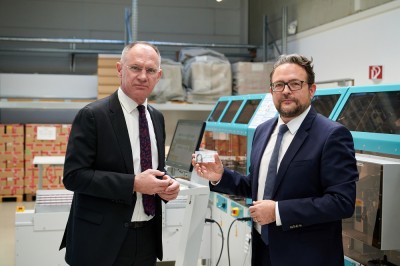Production of ID Cards for Displaced Ukrainians - 40,000 Copies Already Manufactured
The production of the ID card for displaced persons, continues to progress. So far, 40,000 cards have been produced for the 56,000 registered Ukrainian aid seekers and 30,000 have already been issued. This document is enormously important for war refugees in Austria, as it allows, among other things, access to the Austrian labor market, or internal travel within the EU.
 Minister of the Interior Gerhard Karner in the production area of the State Printing Office. / Picture: © BMI Bundesministerium für Inneres / Karl Schober
Minister of the Interior Gerhard Karner in the production area of the State Printing Office. / Picture: © BMI Bundesministerium für Inneres / Karl Schober
Production of the so-called "Blue Card" at the Austrian State Printing Office continues to progress. So far, more than 40,000 cards have been printed and around 30,000 have been sent out.
"For Ukrainians displaced by the war, rapid and unbureaucratic assistance is important, and that is exactly what has been achieved, with more than 40,000 ID cards now ready - an essential document for displaced people, enabling them to access the labor market," said Interior Minister Gerhard Karner during a visit to the Austrian State Printing Office this week.
The "ID card for displaced persons" is produced at the State Printing Office and serves as proof of identity for people from Ukraine seeking protection in Austria. With this document, they are able to take up a job in Austria.
Ukrainians who have previously registered with the police receive the ID card for displaced persons through the police. So far, this has been possible for 30,000 people.
Another 10,000 have already been completed. Nevertheless, the production of Blue Cards is lagging behind, as more than 56,000 Ukrainians seeking help have already registered with the police (as of April 12, 2022).
Legally, the "Blue Card" is a variant of the already existing EU residence permit and is to be considered equivalent to a travel document. The card is a modern high-security document and is protected by security features such as microprinting, a kinegram, UV features, OVI (Optically Variable Ink) as well as tactile features (elevations that can be felt with the finger) on an analog level.
In addition, the biometric data of the holder is stored on a chip in the residence permit (as in the passport and ID card) and protects against manipulation on a digital level. The right to basic care, health insurance and registration for school attendance exists even without a "Blue Card".
BMI - Ministry of the Interior - Bundesministerium fuer Inneres



